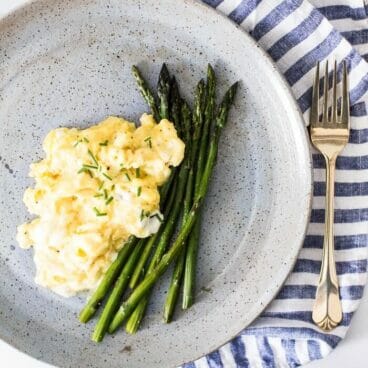These fun fall vodka cocktails feature seasonal flavors like apple, pumpkin, pear, and cranberry! From the Apple Cider Martini to Cranberry Moscow Mule, these are my favorite easy drinks for the season.

Fall is one of my favorite seasons for drinks, with flavors like apple, pomegranate, and pear. When it comes to mixing cocktails, I’ve found that vodka is a perfect pairing that lets these cozy flavors shine! Unlike bourbon or rum, which can sometimes overpower, vodka makes a clean base for whatever you mix with it.
I’ve tried and tested dozens of vodka cocktails and these are my top fall vodka cocktails for the season. From the Pumpkin Martini to the Apple Cider Mule, vodka highlights the seasonal ingredients to make fall drinks that always go over well!
My top fall vodka cocktails
This is my go-to fall vodka cocktail that perfectly captures the season with fresh apple cider, orange liqueur, and a hint of cinnamon. The tangy-sweet balance is irresistible, and it takes less than five minutes to shake together for an impressive presentation.
The Cranberry Moscow Mule combines the classic spicy ginger beer with tart cranberry juice for a festive twist on the classic. Served ice-cold in a copper mug, the deep red color looks stunning and is simple to whip up for guests.
Made with real pumpkin puree and pumpkin pie spice, this creamy Pumpkin Martini is surprisingly sophisticated. I love rimming the glass with crushed graham crackers for a hint of sweet crunch that makes each sip taste like dessert
The Apple Cider Mule is my casual crowd-pleaser that's incredibly easy to make for parties because you can build it right in the glass. The combination of apple cider and ginger beer creates a bubbly, sweet-meets-spicy drink.
This Pear Martini impresses everyone with its delicate flavor from muddled fresh pear and pear vodka balanced with lemon and orange bitters. The key is using a ripe pear for the juiciest fruity flavor.
This seasonal twist on the classic Cosmopolitan cocktail swaps cranberry for pomegranate juice, which makes a sweeter, more complex flavor profile. The gorgeous ruby color and tart-sweet balance make it perfect for fall entertaining.
The classic Vodka Sour becomes a proper fall drink when you swap simple syrup for maple syrup and garnish with a cinnamon stick. It's beautifully balanced and sweet tart, with rich vanilla notes from the maple syrup.
The Baileys White Russian is creamy, coffee-spiked comfort in a glass! The combination of vodka, coffee liqueur, and Baileys creates a dessert-like drink that's perfect for sipping by the fire on a chilly fall evening.
The Vodka Collins might seem simple, but great for fall when you swap plain simple syrup for Rosemary Simple Syrup or Ginger Simple Syrup. Think of it as sparkling vodka lemonade that feels festive but not heavy.
The Pomegranate Martini features jewel-toned pomegranate juice and is closer to a Cosmo than the classic martini! I like to add a few pomegranate arils to the glass for a fun presentation and textural element.
Serving fall vodka cocktails for a crowd
I appreciate vodka’s versatility when I’m hosting. Not everyone loves whiskey-forward drinks! When I’m hosting fall parties, I’ve found that offering a signature vodka cocktail plus a few alternatives keeps things simple.
For example, I like to make an Apple Cider Mule bar where guests can help themselves: this way I can actually enjoy the party instead of playing bartender all night.
For larger parties, I often set out two or three options: something light and refreshing like the Vodka Collins with rosemary simple syrup, something classic like the Cranberry Moscow Mule, and something creamy like the Baileys White Russian.
I also like to prep garnishes in advance. Cinnamon sticks, fresh herbs, and cranberries can all be prepped the morning of the party. I usually slice fruit right before serving.
Fall Vodka Cocktails: Apple Cider Martini & More!
Meet the best fall cocktail….the Apple Cider Martini! It’s deliciously balanced: sweet tart with a hint of cinnamon on the finish.
- Prep Time: 5 minutes
- Cook Time: 0 minutes
- Total Time: 5 minutes
- Yield: 1 drnk
- Category: Drink
- Method: Shaken
- Cuisine: Cocktails
- Diet: Vegan
Ingredients
- 2 ounces apple cider
- 1 ½ ounces vodka
- ½ ounce Cointreau or triple sec
- ½ ounce lemon juice
- 1 teaspoon pure maple syrup or simple syrup
- 1 pinch cinnamon
- Apple slices, for the garnish
Instructions
- Add the apple cider, vodka, Cointreau or Triple Sec, lemon juice, syrup and cinnamon to a cocktail shaker. Add a handful of ice and shake until cold.
- Strain into a martini glass. Garnish with apple slices if desired.
More fall drink ideas to try
Looking for inspiration beyond these fall vodka cocktails? There are lots more seasonal drinks using bourbon, rum, tequila, and more! Here are all our top fall drink ideas:
- Go for the best of the best: 15 Fall Cocktails for the Season
- Try 12 Fantastic Fall Drinks (includes non-alcoholic!)
- Take the chill off with Hot Alcoholic Drinks to Keep You Warm or 15 Hot Drinks to Take the Chill Off
- Opt for the classic Pumpkin Spice Latte or Iced Pumpkin Spice Latte
from A Couple Cooks https://ift.tt/QZX4xfD
























